First, was Slovakian Peter Bondra, who first competed for Slovakia at the 1996 World Cup of Hockey, scoring 3 goals in 3 games. He then appeared for the Slovaks at the 1998 Olympics, the first for the star players of the NHL. In 2002, he and the Slovakians had the tournament of their lives, as Bondra scored 7 goals to lead all players and 9 points in 9 games, including the game winning goal in the gold medal final with less than two minutes to play as Slovakia won their first, and to date only, World Championship.
He returned for his second World Championship in 2003 and won a bronze medal. Bondra made one final international appearance, that being during the 2006 Olympics where he scored 4 goals in 6 games.
"I'd like to thank Slovakian hockey. I was always proud to play for my country, Olympics or World Championships. My dream was to always play for the national team and score the game winning goal for a gold medal. My dream came true," Bondra stated at the ceremony.
Today's featured Bondra jersey is a 2002 Slovakia National Team Peter Bondra jersey as worn when "Peter the Great" scored the game winning goal in the championship final of the 2002 World Championships, an unexpected title considering that just three months earlier Slovakia failed to advance out of the Preliminary Round of the 2002 Olympics. Slovakia's rise to the World Championship came less than ten years ofter becoming an independent nation following the breakup of Czechoslovakia in 1993 and being forced to start at the lower depths of the IIHF ladder system in Pool C, while the Czech Republic was allowed to retain Czechoslovakia's place in the Top Division of the World Championship system.
The next player, alphabetically, to be inducted into the IIHF Hall of Fame was Russian Sergei Fedorov, whose international career began during the days of the Soviet Union. The young hockey protege was a three time member of the Soviet Union National Team at the World Junior Championships in 1987, 1988 (silver) and 1989, when he won a gold medal. Later that spring he made his debut at the World Championships at the senior level, where he added a second gold medal. He returned to the 1990 World Championship with the Soviets and took home a second consecutive gold.
His final international appearance for the Soviet Union came at the 1991 Canada Cup, and actually occurred after his defection in July of 1990.
He returned to the international stage in 1996 as a member of Russia at the World Cup of Hockey, as the Soviet Union by now had ceased to exist, breaking up on December 26, 1991. His second international appearance for Russia was at the 1998 Olympics, where he won a silver medal, his first for Russia. Four years later, he was again a medal winner at the Olympics, this time a bronze in 2002.
18 years after his last World Championships, Fedorov would return in 2008, scoring 5 goals and 12 points in 9 games as he won his third gold medal at the Worlds and his first for Russia, as the previous two were won with the Soviets.
In 2010 he played in both the Olympics in Salt Lake City and then later the World Championships three months later where he won a silver medal.
"I am so honored and so pleased that this life of hockey that has given me so much joy has borught me to this place and this special recognition,' said Fedorov.
Today's featured Fedorov jersey is a 1996 Russia National Team Sergei Fedorov jersey as worn when Fedorov played in his first international tournament for Russia following the dissolution of the Soviet Union, his first international appearance in seven years.
Later in the spring of 1986, Kamensky made his debut for the senior level team at the World Championships, winning another gold medal just months apart. Kamensky was busy in 1987, as he first played for the Soviets in the two game Rendez-vous '87 series against the NHL All-Stars in Quebec. He next played in the World Championships, scoring 5 goals and 8 points in 10 games, earning a sliver medal. Finally, later in the spring, he competed for the Soviets at the 1987 Canada Cup.
He made his Olympic debut at the 1988 Games in Calgary, where he contributed 6 points in 8 games on his way to a gold medal. Along with other Soviet National Team duties, such as the Izvestia Trophy, Kamensky played in the next three World Championships, winning gold in 1989 and 1990 and bronze in 1991 when he was named as the tournament's Best Forward following 6 goals and 11 points in 10 games before closing out his international Soviet career with the Goodwill Games in July of 1990.
His first World Championship for Russia came in 1994 with 5 goals and 10 points in 6 games. In 1996, Kamensky won the Stanley Cup with the Colordao Avalanche, which earned him a place in the Triple Gold Club, having previously won an Olympic Gold medal and a World Championship gold medal.
With the NHL now accommodating their players participation in the Olympics, Kamensky was able to return to the Olympics for the first time in a decade, where he earned a silver medal.
He wrapped up his international career with the 2000 World Championships, his seventh.
Today's featured Kamensky jersey is a 1988 Russia National Team Valeri Kamensky jersey as worn when Kamensky played in his first Olympic Games while as a member of the Soviet Union. This was one of the first times the Tackla company of Finland supplied jerseys to the IIHF and before they developed their signature look with colored shoulders adorned with their trademark diamond shaped logo.
The final player inductee was Finn Ville Peltonen, who first played for Finland at the European U18 Junior Championship where he began his medal collection with a bronze. He then moved up to the U20 level at the 1993 World Juniors.
He made his Olympic debut at the 1994 Olympics, winning a bronze medal, which was followed by a silver medal at the World Championships later that spring in his first attempt.
He became a legend in Finland when he scored a hat trick and had an assist in Finland's 1985 World Championship gold medal winning final game, a 4-1 win over Sweden. Peltonen finished with 6 goals and 11 points.
Peltonen is elated after completing his hat trick
He played in both the World Championships and the World Cup of Hockey in 1996 followed by the 1997 World Championships. At the 1998 Olympics, Peltonen won a bronze medal. He next won three consecutive World Championship medals, silver in 1998 and 1999 and bronze in 2000.
After a break of a couple of years, Peltonen played in the next six World Championships from 2003 to 2008, winning a bronze in 2006, a silver in 2007 and another bronze in 2008. During this timer period, Peltonen also finished as runner up in the 2004 World Cup of Hockey and won a silver medal at the 2006 Olympics.
Aside from games as a part of the Euro Hockey Tour, Peltonen's final major international tournament was the 2010 Olympics games, his fourth, where he won a bronze medal.
In all, Peltonen represented Finland 19 times, winning 13 medals.
Today's featured Peltonen jersey is a 1995 Finland National Team Ville Peltonen jersey from the 1995 World Championships where Peltonen famously had a hat trick in the gold medal game to give the Finns their first ever world Championship, which came at the expense of arch rival Sweden.
This jersey was made by Tackla though branded as Reeebok. This style was worn during 1994 and 1995 until Nike became the supplier to the IIHF in 1996.
Pat Quinn was also inducted into the builders category. He led Canada to its first gold medal in 50 years at the 2002 Olympics and also led Canada to the championship of the 2004 World Cup of Hockey and gold medals at both the 2008 U18 World Championship and the 2009 World U20 World Championships.
Ben Smith, who was a four time US Olympic Women's hockey coach, who led the Americans to the gold medal at the first women's Olympic hockey tournament in 1998, was also inducted into the IIHF Hall of Fame
Finally, the deserving winner of the second Richard "Bibi" Torriani Award was Gabor Ocskay of Hungary. The Torriani Award is given to players who have had a great international career regardless of where they have played in recognition of players who did not necessarily win Olympic or World Championship medals, but who still had remarkable careers.
He would go on to play for Hungary at the European U18 juniors twice, the U20 World Juniors twice, the World Championships 16 times in the B, C and D Pool and later at the Division I level and a round of Olympic qualifying, scoring 76 goals and 91 assists for 167 points in 122 games. He also played his hometown Alba Volán Székesfehérvár of the Hungarian Nationwide Championship League for 16 seasons, eventually scoring 307 goals and 446 assists for 753 points in 488 games.
He was a three time Hungarian Player of the Year, a two time Hungarian champion and won two bronze, two silver and a gold medal as he helped guide Hungary up the IIHF ladder, all the way to the Top Divsion by winning the Division I Group B championship in 2008, only without Ocskay, as he unexpectedly died on March 24th, 2008 of a heart attack at the age of only 33, just two days after winning the 2008 Hungarian championship. His passing hit the hockey fans in Hungary hard, and they remembered him by lighting candles at every ice rink in the country.
Gabor's sister Zsuanna remarked, “The family and the whole Hungarian community, which is like family, have never forgotten him,” she said. “The rink in his hometown of Szekesfehervar bears his name since 2009 and the ice hockey academy is named after him. Some of the players who trained there were members of this national team that competed in St. Petersburg.”
Today's featured Ocskay jersey is a 2009 Hungarian National Team Gábor Ocskay jersey that he would have worn in Switzerland at the 2009 Top Division World Championships had he been alive to do so.

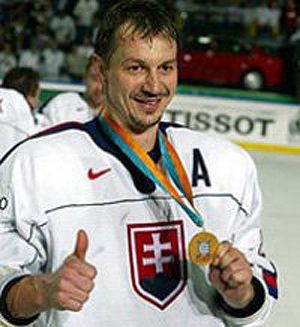
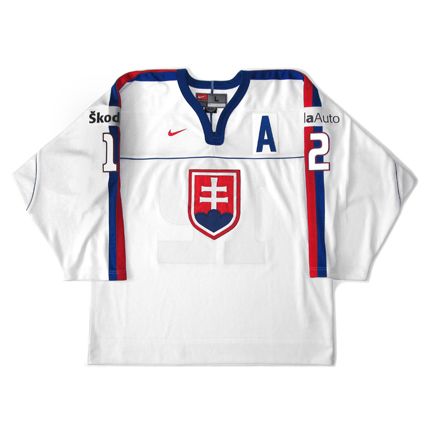
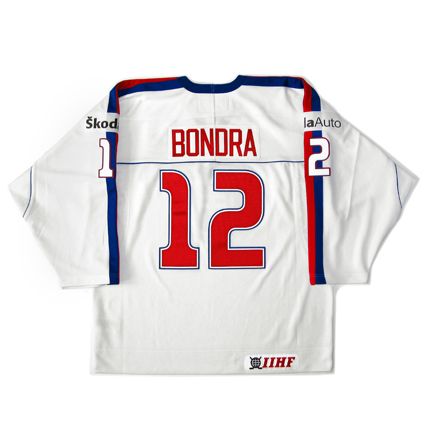
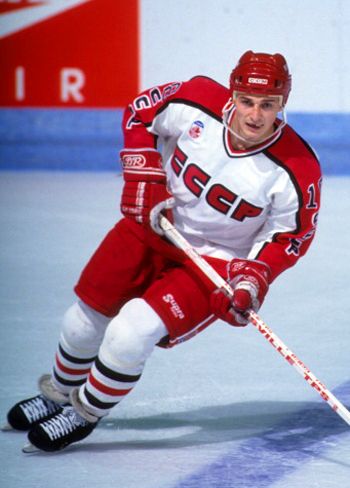
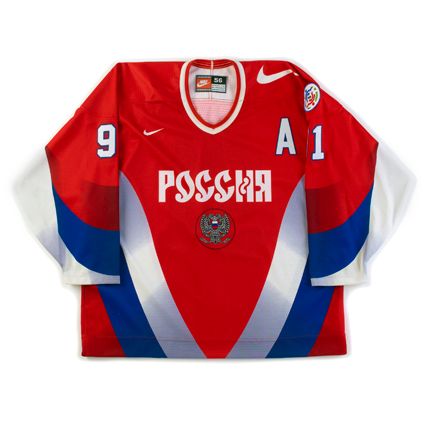



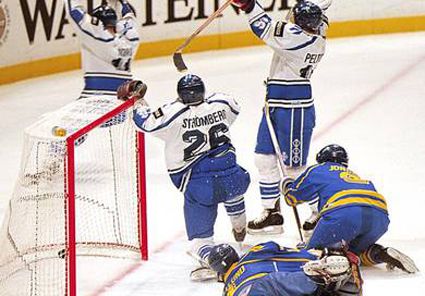
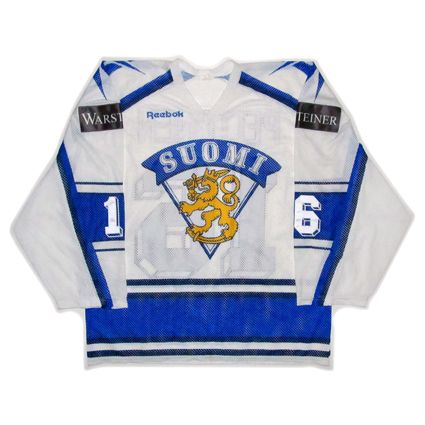


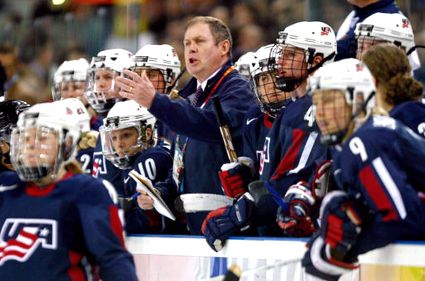
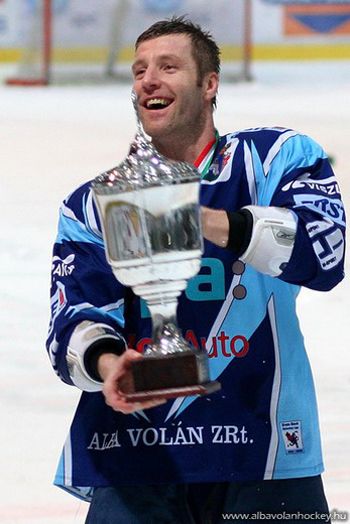
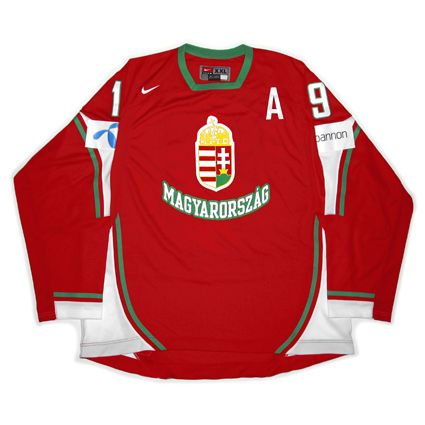
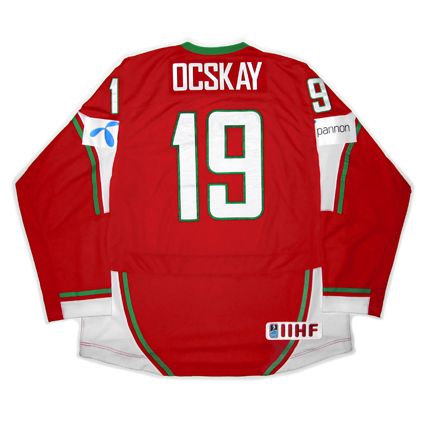










No comments:
Post a Comment
We welcome and encourage genuine comments and corrections from our readers. Please no spam. It will not be approved and never seen.